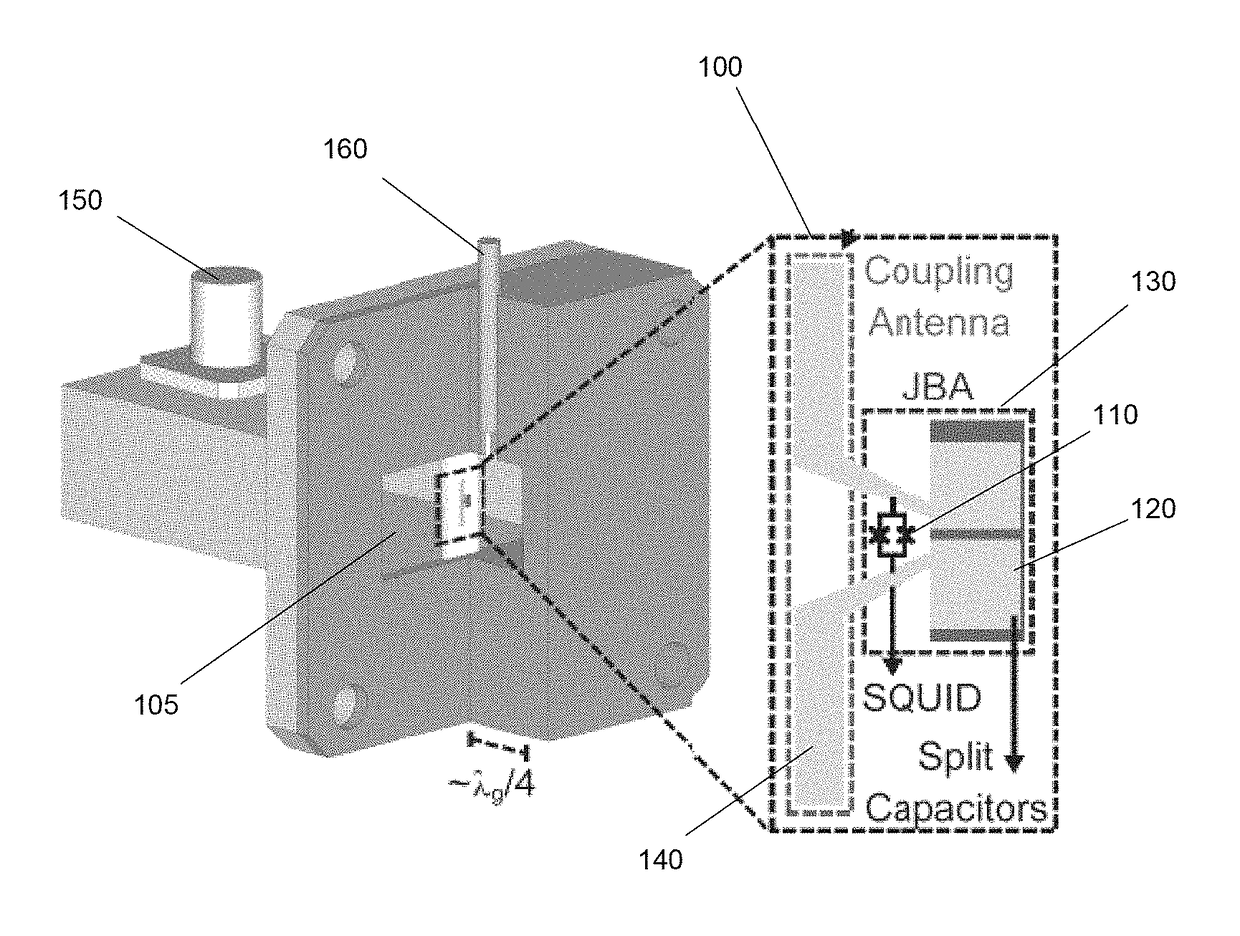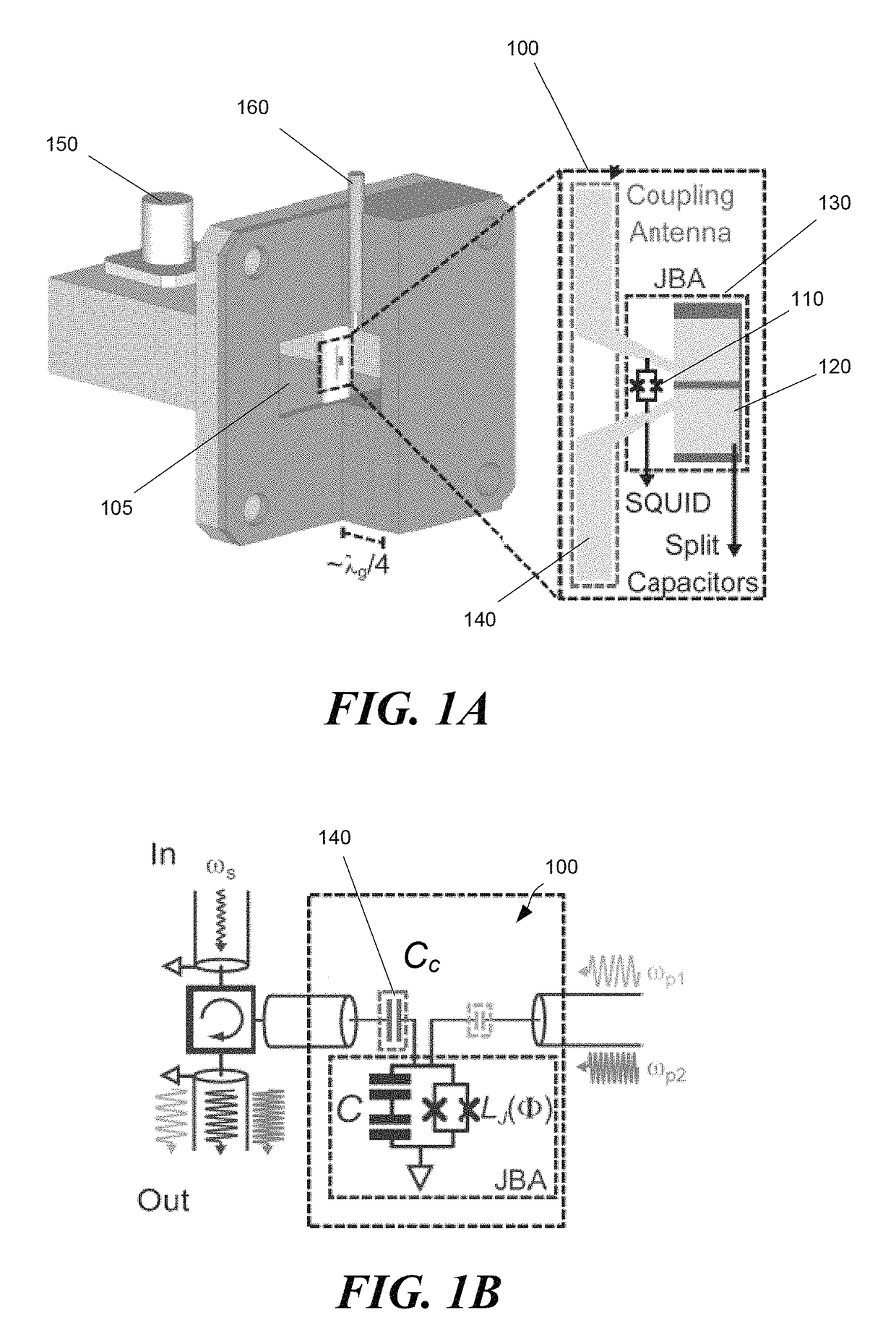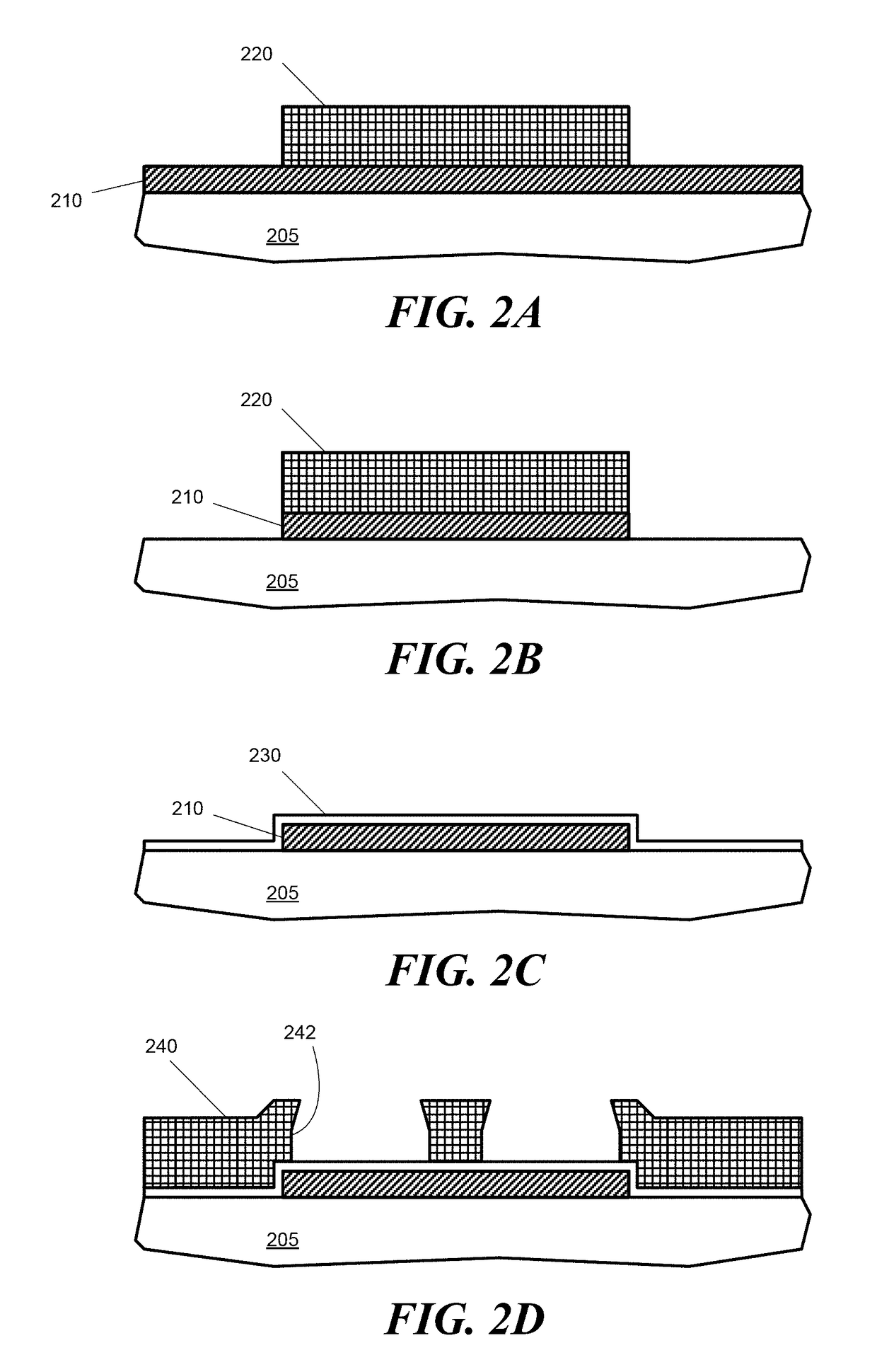Wireless Josephson bifurcation amplifier
a bifurcation amplifier and wireless technology, applied in amplifier types, amplifier types, electrical apparatus, etc., can solve problems such as inability to create simple multi-qubit gates, difficulty in integration of josephson amplifiers into current quantum electrodynamics (qed) systems, and undesirable consequences
- Summary
- Abstract
- Description
- Claims
- Application Information
AI Technical Summary
Benefits of technology
Problems solved by technology
Method used
Image
Examples
examples
[0056]Wireless JBAs were fabricated using methods described above, and tested. In some cases, WJBAs were cooled down in a cryogen-free dilution refrigerator to about 50 mK. First, the amplifier's linear resonance frequency and bandwidth were measured by looking at a reflected phase from the device using a vector network analyzer (VNA). The reflected phase is illustrated in the inset of FIG. 4A and shows a 360° phase roll characteristic of an overcoupled resonator.
[0057]Next, by applying current to an external superconducting coil magnet, the linear frequency of the WJBA was tuned with flux. As shown in FIG. 4A, the linear resonance frequency tuned between values of around 11.4 GHz and 9 GHz. By fitting the resonance frequency as a function of flux to the following equation:
[0058]f(Φ)=12πC(Lstray+Φ02πd0cosπΦ / Φ0)(2)
[0059]the circuit parameters were found to be C≈1 pF, Lstray≈120 pH and I0≈4.6 μA with error bars of about 10%. From these results, the resonator Q at increased c...
PUM
 Login to View More
Login to View More Abstract
Description
Claims
Application Information
 Login to View More
Login to View More - R&D
- Intellectual Property
- Life Sciences
- Materials
- Tech Scout
- Unparalleled Data Quality
- Higher Quality Content
- 60% Fewer Hallucinations
Browse by: Latest US Patents, China's latest patents, Technical Efficacy Thesaurus, Application Domain, Technology Topic, Popular Technical Reports.
© 2025 PatSnap. All rights reserved.Legal|Privacy policy|Modern Slavery Act Transparency Statement|Sitemap|About US| Contact US: help@patsnap.com



